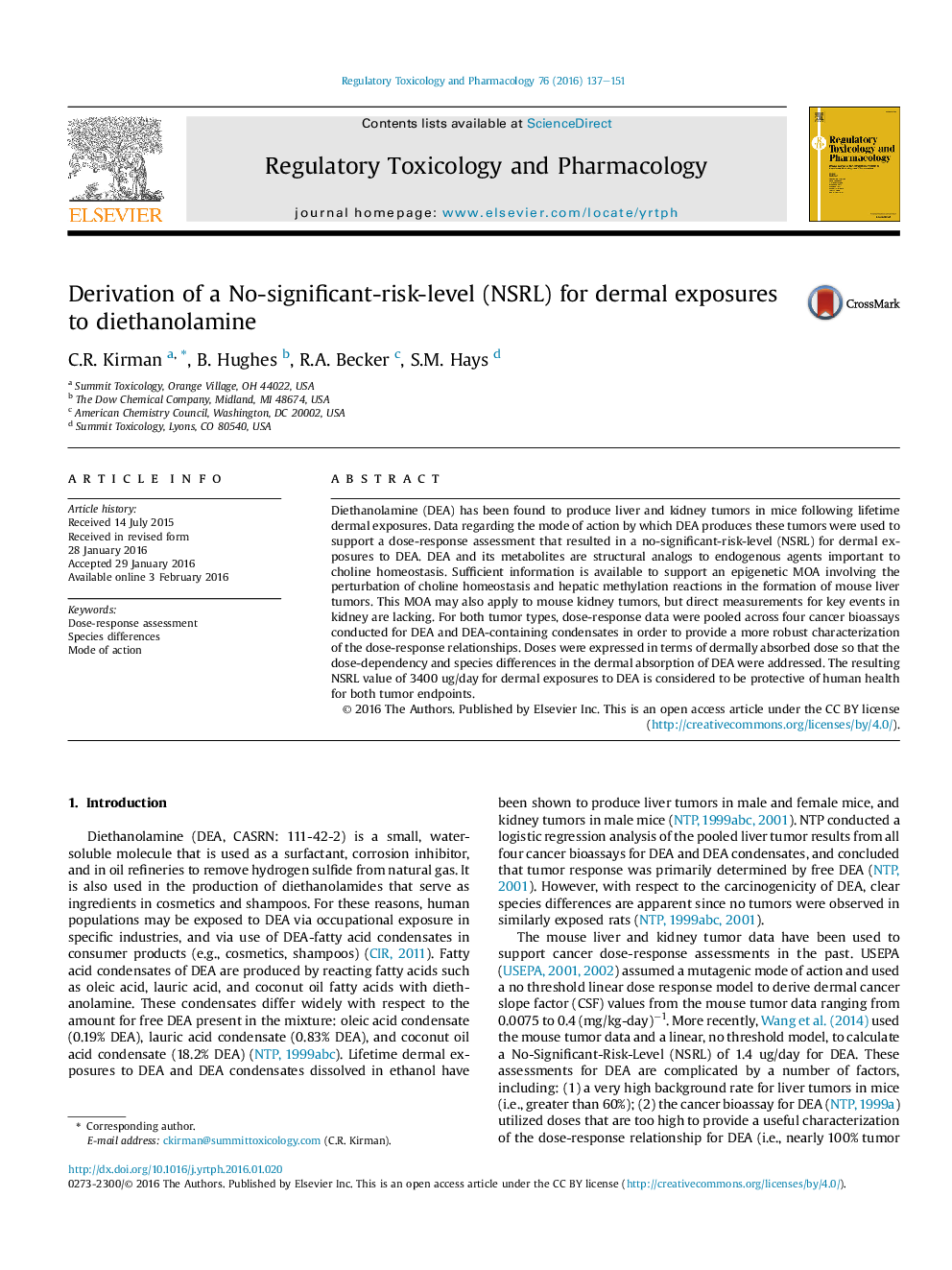| Article ID | Journal | Published Year | Pages | File Type |
|---|---|---|---|---|
| 5856408 | Regulatory Toxicology and Pharmacology | 2016 | 15 Pages |
Abstract
Diethanolamine (DEA) has been found to produce liver and kidney tumors in mice following lifetime dermal exposures. Data regarding the mode of action by which DEA produces these tumors were used to support a dose-response assessment that resulted in a no-significant-risk-level (NSRL) for dermal exposures to DEA. DEA and its metabolites are structural analogs to endogenous agents important to choline homeostasis. Sufficient information is available to support an epigenetic MOA involving the perturbation of choline homeostasis and hepatic methylation reactions in the formation of mouse liver tumors. This MOA may also apply to mouse kidney tumors, but direct measurements for key events in kidney are lacking. For both tumor types, dose-response data were pooled across four cancer bioassays conducted for DEA and DEA-containing condensates in order to provide a more robust characterization of the dose-response relationships. Doses were expressed in terms of dermally absorbed dose so that the dose-dependency and species differences in the dermal absorption of DEA were addressed. The resulting NSRL value of 3400 ug/day for dermal exposures to DEA is considered to be protective of human health for both tumor endpoints.
Keywords
Related Topics
Life Sciences
Environmental Science
Health, Toxicology and Mutagenesis
Authors
C.R. Kirman, B. Hughes, R.A. Becker, S.M. Hays,
